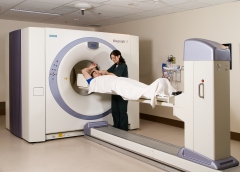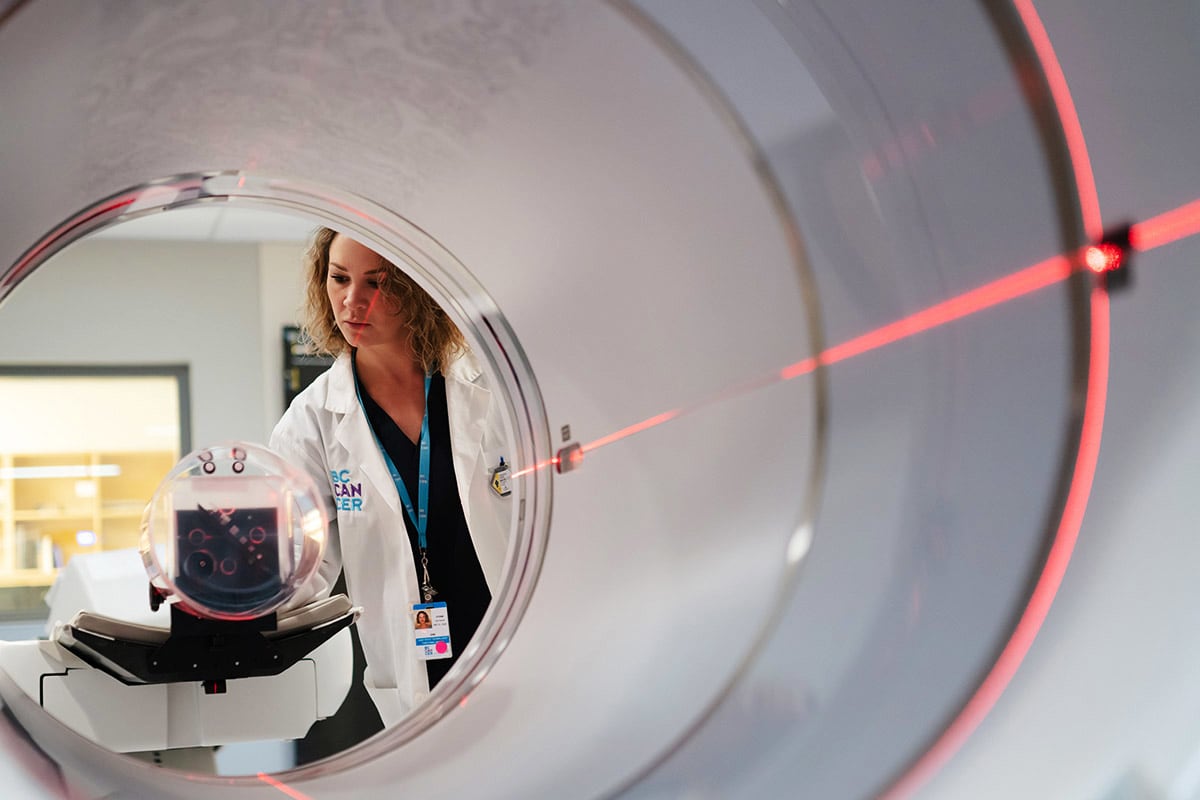As a nuclear medicine physician, I help patients by reading a special type of scan to detect cancers called a PET/CT scan. PET stands for “positron emission tomography” while CT stands for “computed tomography.”
A PET scan is extremely sensitive — it can measure tiny amounts of radioactive material that show how organs function, all the way to the level of molecules and cellular biochemistry. By using trace amounts of glucose (sugar), which the cells (including tumours) metabolize, it has been shown that PET scans are so sensitive, they detect even small cancers.
 A PET/CT scanner
A PET/CT scanner
The CT scan provides a map of the anatomy of the body — giving us a roadmap to localize where the tiny lesions found on a PET scan are located.
Combining both types of scan in one machine allows us to make an accurate assessment of where cancers are located and if they have spread to regional lymph nodes or elsewhere in the body.
No test is perfect in medicine, but for cancer imaging, the PET/CT scan is currently the most accurate test there is.
In addition to finding out whether a cancer is localized or has spread to multiple organs, PET/CT scans are extraordinarily useful after chemotherapy or radiation therapy. A PET/CT scan can tell us if a residual mass is just scar tissue or if it’s a cancer that might require further treatment.
This really helps people avoid unnecessary treatment when conventional scans still show some abnormal tissue where the cancer used to be. This is what I do every week as part of my clinical job, and it is really rewarding. These scans help oncologists and surgeons offer the most appropriate treatment to patients suffering from many common cancers such as lung cancer, lymphoma, head and neck cancer, colorectal cancer, melanoma and many other cancers.
François

State-of-the-Art Scanning Technology a First for Canada
Support BC Cancer – Vancouver’s Technology Transformation — a suite of best-in-class diagnostic, imaging and radiation equipment, including the Next Gen PET/CT.
Donate Today

